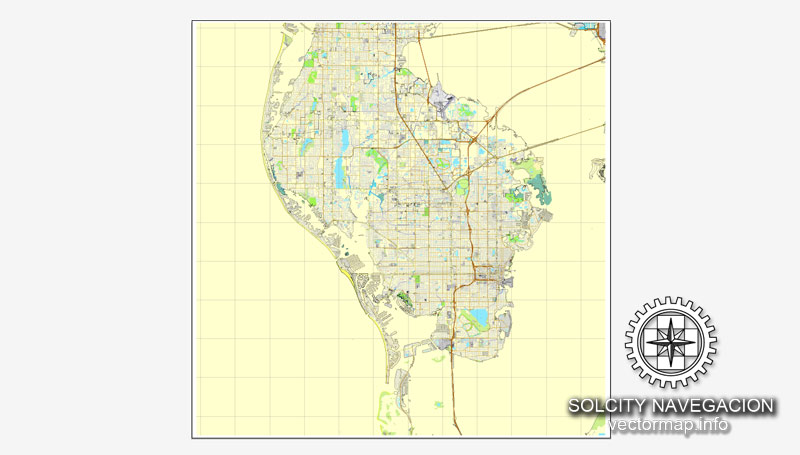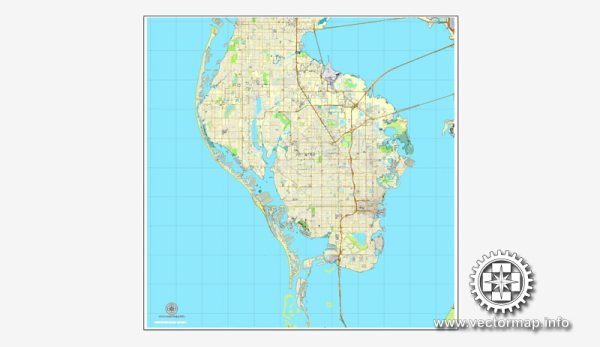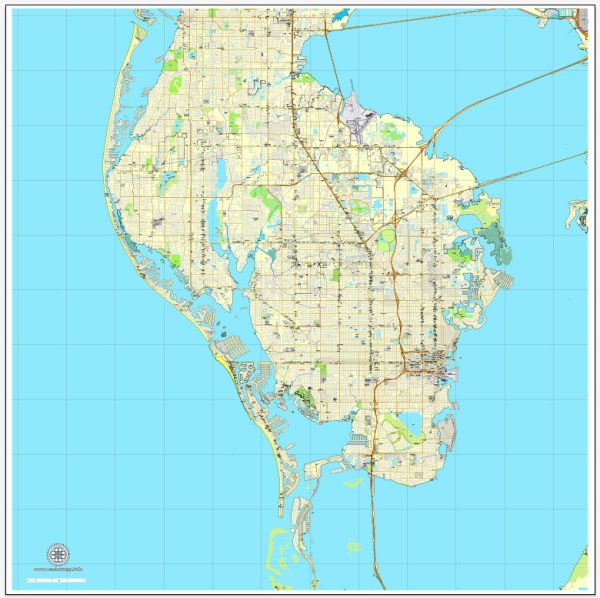St. Petersburg, Florida, often referred to as “St. Pete,” is a vibrant and rapidly evolving city located on the Pinellas Peninsula along the Gulf Coast of Florida. Its urban development has undergone significant transformation in recent years, and the city is known for its diverse neighborhoods, cultural attractions, and a growing urban core. Here’s a description of St. Petersburg’s urban development:
- Downtown Revitalization: St. Petersburg’s downtown area has seen a significant revitalization in recent years. The city has invested in infrastructure improvements, beautification projects, and the development of mixed-use buildings. The Central Avenue corridor is a prime example of this, with its wide sidewalks, outdoor dining options, and a thriving arts scene.
- Cultural and Arts Hub: The city is known for its thriving arts and culture scene. The Salvador Dali Museum, the Museum of Fine Arts, and The James Museum of Western & Wildlife Art are just a few of the cultural attractions that draw visitors. The city also hosts the St. Petersburg Arts Alliance, which supports local artists and promotes cultural events.
- Waterfront Development: St. Petersburg’s location along the Tampa Bay provides ample opportunities for waterfront development. The city’s beautiful waterfront parks and the iconic St. Pete Pier offer residents and visitors stunning views, recreational activities, and waterfront dining options.
- Residential Growth: St. Petersburg has experienced a surge in residential development, particularly in the downtown area. New high-rise condominiums and apartments have been constructed, attracting a mix of young professionals, retirees, and families. This development has led to an increase in population density in the urban core.
- Sustainability Initiatives: St. Petersburg has also shown a commitment to sustainability and green urban development. There are bike lanes, pedestrian-friendly streets, and efforts to increase public transportation options. The city has embraced eco-friendly practices, including the implementation of solar power, recycling programs, and green building standards.
- Historic Preservation: The city takes pride in preserving its historic neighborhoods. The Old Northeast and Historic Kenwood are examples of well-preserved historic districts with charming bungalow-style homes. These neighborhoods reflect the city’s efforts to maintain its heritage while promoting urban growth.
- Business and Innovation: St. Petersburg has become a hub for entrepreneurship and innovation. Co-working spaces and tech incubators have emerged, attracting startups and creative professionals. The city has worked to create an environment conducive to innovation and technology-based industries.
- Cultural Events and Festivals: St. Petersburg hosts a variety of cultural events and festivals throughout the year. The St. Pete Pride Festival, the Firestone Grand Prix of St. Petersburg, and the Mainsail Arts Festival are just a few examples of the city’s vibrant event calendar, attracting residents and visitors alike.
- Food and Dining: The city’s dining scene has also flourished, with numerous restaurants, cafes, and food markets offering diverse cuisine options. The city is known for its local seafood and farm-to-table dining experiences.
- Transportation: St. Petersburg has been working on improving transportation options, including the expansion of the Pinellas Suncoast Transit Authority (PSTA) bus services, the implementation of bike-sharing programs, and the development of the Cross-Bay Ferry to connect with Tampa.
St. Petersburg, Florida, is a city that has successfully blended its historic charm with modern urban development. It has become a popular destination for residents and tourists alike, offering a high quality of life, a strong sense of community, and a wealth of cultural and recreational opportunities.




 Author: Kirill Shrayber, Ph.D.
Author: Kirill Shrayber, Ph.D.